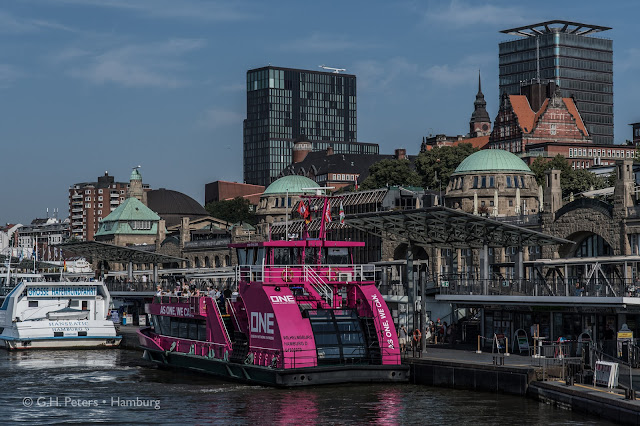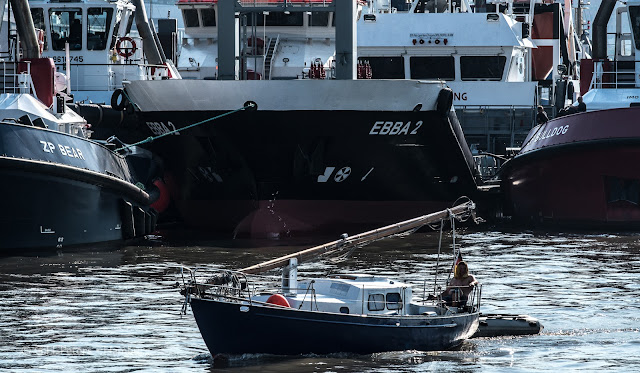Freitag, 13. November 2020
Montag, 9. November 2020
Gegen das Vergessen • Lest we forget
A Stolperstein (pronounced [ˈʃtɔlpɐˌʃtaɪn]; plural Stolpersteine; literally “stumbling stone”, metaphorically a “stumbling block”) is a sett-size, ten-centimetre (3.9 in) concrete cube bearing a brass plate inscribed with the name and life dates of victims of Nazi extermination or persecution.
The Stolpersteine project, initiated by the German artist Gunter Demnig in 1992, aims to commemorate individuals at exactly the last place of residency—or, sometimes, work—which was freely chosen by the person before he or she fell victim to Nazi terror, euthanasia, eugenics, deportation to a concentration or extermination camp, or escaped persecution by emigration or suicide. As of December 2019, 75,000 Stolpersteine have been laid, making the Stolpersteine project the world's largest decentralized memorial.
The majority of Stolpersteine commemorate Jewish victims of the Holocaust. Others have been placed for Sinti and Romani people (then also called “gypsies”), homosexuals, the physically or mentally disabled, Jehovah’s Witnesses, black people, members of the Communist Party, the Social Democratic Party, and the anti-Nazi Resistance, the Christian opposition (both Protestants and Catholics), and Freemasons, along with International Brigade soldiers in the Spanish Civil War, military deserters, conscientious objectors, escape helpers, capitulators, “habitual criminals”, looters, and others charged with treason, military disobedience, or undermining the Nazi military, as well as Allied soldiers. WIKIPEDIA
Mittwoch, 4. November 2020
2459158 JDN
Today I am 26,000 days old. Why do I count the days? A day is the unit in which we experience our lives. Counting the days makes them more precious to me and reminds me how little time is left.
How did I compute? Obviously, multiplying my years by 365 doesn’t work, because it ignores the leap years of my life. So I use the Julian Day Number (JDN).
“The Julian Day Number (JDN) is the integer assigned to a whole solar day in the Julian day count starting from noon Universal time, with Julian day number 0 assigned to the day starting at noon on Monday, January 1, 4713 BC, proleptic Julian calendar (November 24, 4714 BC, in the proleptic Gregorian calendar), a date at which three multi-year cycles started (which are: Indiction, Solar, and Lunar cycles) and which preceded any dates in recorded history. For example, the Julian day number for the day starting at 12:00 UT (noon) on January 1, 2000, was 2 451 545.” WIKIPEDIA
There are various tools to calculate the JDN. This is the one I use:
http://www.warumwieso.de/Kalender-Berechnung.html
But enough of numbers and computing. Here are some lines from one of my favourite poems:
How dull it is to pause, to make an end,
To rust unburnish’d, not to shine in use!
As tho’ to breathe were life! Life piled on life
Were all too little, and of one to me
Little remains: but every hour is saved
From that eternal silence, something more,
A bringer of new things; and vile it were
For some three suns to store and hoard myself,
And this grey spirit yearning in desire
To follow knowledge like a sinking star,
Beyond the utmost bound of human thought.
Alfred, Lord Tennyson
Sonntag, 18. Oktober 2020
Donnerstag, 15. Oktober 2020
Jubiläum | 37 | Anniversary
Als ich meine Nikon FG kaufte, wollte ich nur bessere, d.h. schärfere, Fotos machen als mit der wenig benutzten Pocketkamera. Was aus diesem Wunsch in den folgenden Jahren werden würde, konnte ich mir nicht vorstellen.
An diesem Jubiläumstag begreife ich, wie sehr jener Kauf mein Leben beinflußte, ja veränderte. Langsam lernte ich sehen. Von der Beherrschung der technischen Aspekte kam ich immer mehr zu einer Auseinandersetzung mit dem, was ich sah.
Der entscheidende Schritt war der Wechsel zur digitalen Fotografie 2005. Er wurde erleichtert durch die Tatsache, daß ich die manuell fokussierbaren Objektive weiter verwenden konnte. Am wichtigsten war, daß nun der Prozeß der Ausarbeitung der Fotos in meinen Händen war. Nach einigen vorsichtigen Schritten wagte ich dann die Präsentation meiner Bilder in diesem Blog und auf meiner Website.
Inzwischen nutze ich gut ein Dutzend Objektive der neuesten Generation an Kameras im DX- und FX-Format. Aktuelle Arbeitspferde sind die D4 und die D500. Die über zehn Jahre alten D700 und D300s werden ebenfalls eingesetzt.
Will ich keine Kamera auf einen Spaziergang mitnehmen, dann greife ich doch zur ›Baby-Nikon‹ D3200.
Mindestens so wichtig wie die Ausrüstung sind die Bücher, die mir die Arbeiten der großen Fotografen nahebrachten. Von der Lehrbüchern über Fotografie förderten und beeinflußten mich am meisten die von Michael Freeman.
All das, Ausrüstung und Bücher, wäre nichts gewesen, ohne die Gelegenheiten, Theorie in die Praxis umzusetzen. Die Begegnung mit Menschen, die fotografische Begleitung, manchmal nur kurze aber intensive Momente, haben mein Leben bereichert.
Im Laufe der Jahre ist die Fotografie für mich eine Art zu leben geworden.
When I bought my Nikon FG, I just wanted better to take better, i.e. sharper, photos than with my little-used pocket camera. I couldn't imagine what this wish would lead to in the following years.
On this anniversary, I realise how much that purchase influenced my life and even changed it. I slowly learned to see. After mastering the basic technical aspects, I more and more focussed on understanding what I was seeing.
The decisive step was the switch to digital photography in 2005. It was made easier by the fact that I could continue to use the manually focusable lenses. Most importantly, I gained control over post production and embraced the opportunities of digital presentation of my pictures.
I now use a dozen or so lenses of the latest generation with DX and FX format cameras. Current workhorses are the D4 and D500. The D700 and D300s, which are over ten years old, are still used.
If I don't want to take a camera with me for a walk, then I'll grab the ›Baby Nikon‹ D3200.
At least as important as the equipment are the books that introduced me to the work of the great photographers. Of all the textbooks on photography, I was most enlightened and influenced by Michael Freeman’s books.
All of this, equipment and books, would have meant nothing without the opportunity to put theory into practice. Meeting people, accompanying them with my camera, sometimes only for short but intense moments, has enriched my life.
Over the years photography has become a way of life for me.

























































